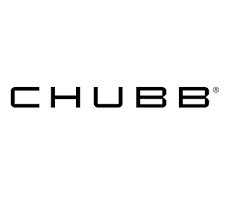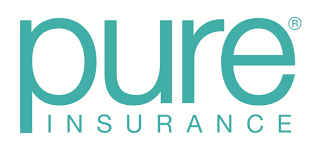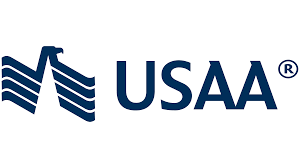Filing A Roof Damage Claim With Insurance
Roof Claim Process Overview
Don’t get a roof claim denied! We’ve got a lot of detail about how to file a roof damage claim with your insurance carrier on this page so let’s sum it all up in one section. For all the details, scroll down below to read more about each step.
We’ve found that filing a roof damage claim can be broken down into 6 simple steps.
Step 1: Get An Inspection From A Licensed Contractor
Step 2: File The Claim With Your Carrier
Step 3: Meet The Carrier’s Adjuster At The Insurance Inspection
Step 4: Review Your Roof Estimate, First Check, And Claim Documentation
Step 5: Select Your Materials & Colors
Step 6: Get Your Roof Installed And Pay After Completion
Seems easy right? If you want to know more… read below about the details of each step or better yet, go ahead and set up a free Five Points roof inspection and roof damage claim consultation! It’s FREE!

Tip: Knowing What To Expect On A Roof Insurance Claim Helps
Knowing the process before you file ensures a higher level of a successful claim and ensures you don’t get denied.
Step 1: Pre-Claim Damage Inspection
Before You File An Roof Insurance Claim!
If you’re not confident you have actual storm damage, don’t file a roof damage claim with your insurance carrier until you’ve had a thorough roof inspection and have consulted with a licensed roofing professional to ensure the amount of damage sustained to your roof would be eligible for repair or replacement. What appears to be roof damage from the ground level could often be age or wear that your policy may not cover.
During your initial inspection, ensure your contractor thoroughly documents all damage with photos and provides an inspection report. This will save time and reduce the likelihood of having multiple reviews to ensure your carrier extends coverage. When selecting a roofing contractor, ask how many insurance claims they typically work with annually to ensure they have experience handling a claim.
Five Points Roofing will thoroughly document your loss and take extensive pictures from the ground, in the air with a drone (we’re FAA-licensed pilots), and on your roof. You and your carrier will need these photos and a damage report to expedite the claims process. Once we complete our inspection, and if it’s determined that a claim should be filed, we’ll let you know to proceed to the next step in the roof damage claims process.
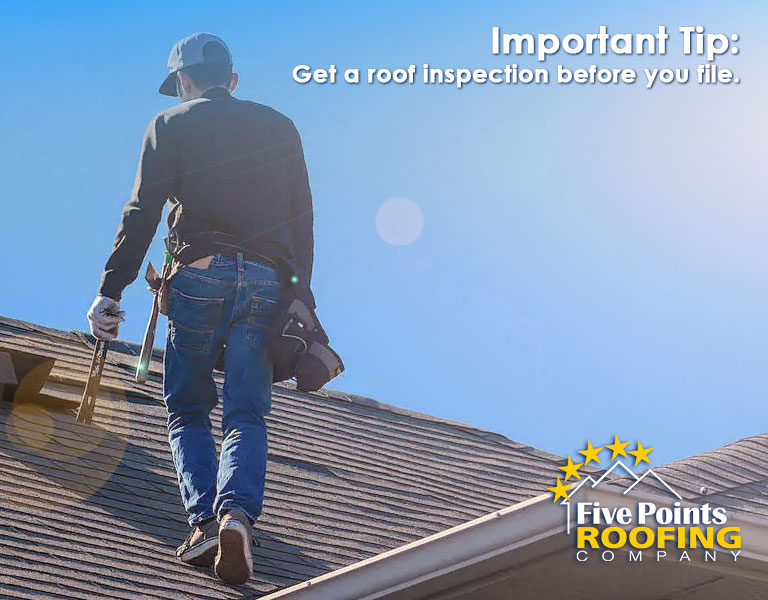
Tip: Confident you have damage (Missing shingles, leaks)?
If you’re 100% confident you have significant damage, it’s okay to go ahead and file a claim to get the ball rolling faster, but just make sure you have an inspection scheduled with your roofer first as your roofer will need to be on-site with the insurance adjuster.
Step 2: File A Roof Damage Claim With Your Insurance Carrier
Filing A Roof Insurance Claim
After roof damage has been confirmed, the next step is to file your claim directly with your insurance carrier. You can do this either online, by calling your carrier’s general customer service number, or by contacting your agent. Download this Insurance Claim Checklist for more information.
You’ll likely be asked a few essential questions that you should be prepared for:
- What is damaged?
- When did you notice the damage?
- What date did the damage occur? (Your contractor will provide a date of loss)
- What is the dollar value of the damage? (Get an estimate from your contractor)
- Do you have any photos or other documentation of the damage?
After providing the relevant information to your carrier, they will schedule a field adjuster to come to your property to inspect the reported damages. We’ll discuss this inspection appointment in the next step.
We Work With All Insurance Carriers
Step 3: Insurance Carrier Adjuster Inspection
Adjuster Meeting & Inspection
After your claim has been successfully filed, your carrier will schedule a time for their field adjuster to visit your property and inspect all damages reported in your claim. It would help if you had the qualified contractor of your choice on-site for this inspection. Some carriers will suggest a contractor for you or even tell you that you must use their approved contractor to repair the damages. While this sounds harmless, most states give homeowners legal rights to select contractors for insurance claim-based repairs.
While most insurance carriers have good intentions, sometimes due to an adjuster’s ignorance or ill will (due to illegal monetary kickbacks) will occasionally play a part. Due to the nature of an insurance claim, it’s always the best choice to hire your own contractor after doing research and due diligence on reputable companies in your area. One of the best things you can do is read online reviews of the contractor you’re thinking of hiring.
Important:
Make sure your contractor is on-site for the insurance adjuster’s inspection. Insurance adjusters are not contractors, and many don’t understand the local code requirements, building standards, and materials required to repair a roof back to its pre-loss condition. By having your contractor on-site, they will be able to explain the repair methods required so that your adjuster can write an appropriate repair or replacement estimate.
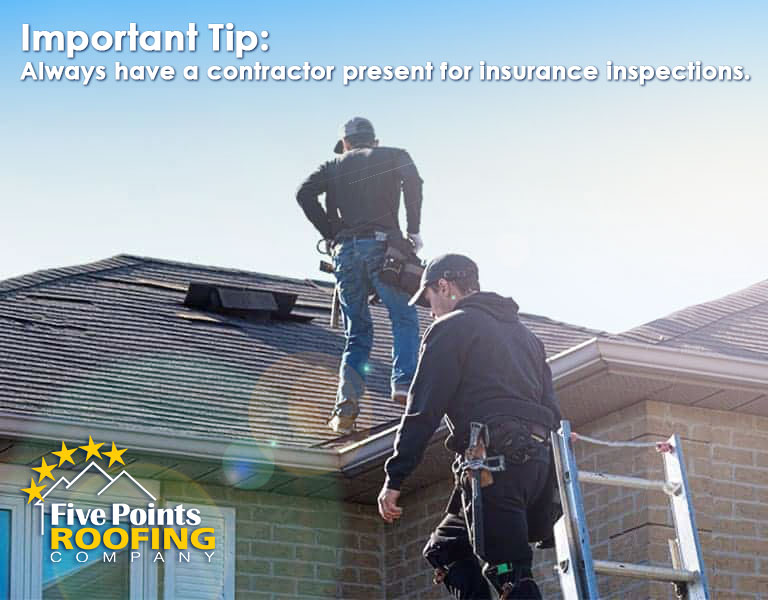
Tip: Ensure A Roofing Inspector Is On-Site For The Adjuster Inspection
Five Points Roofing inspectors are on-site for every adjuster meeting. We’re here to advocate for you and ensure your roof is repaired correctly and uses the same or better materials than initially installed. While many adjusters are competent in roofing techniques, make sure you don’t get short-changed by an inexperienced adjuster that doesn’t understand basic construction concepts.
Read Our Online Reviews

Highly recommended!
Tere and David
He was an amazing liaison on our behalf with our insurance.
Wyatt had our roof finished in 1day! And spotless when his crew left. I have and will continue to recommend this company for their excellent diligence in doing their jobs well.
Clay Watson was impressive from day 1 with his knowledge and expertise of the industry and Will Moore the onsite project manager was excellent at keeping us informed at a moments notice of the progress of his crew.
Love the new roof and wouldn't hesitate to recommend contacting 5 Points if you are considering replacing your roof in the near future.
thank you, thank you, thank you.
arrived, and the install and cleanup went smoothly in one day. Five Points Roofing was second to none, with honesty and professionalism, in my opinion. I recommend this company.
From beginning to end, the entire process was handled with great efficiency and professional excellence.
Wyatt Wolfe was on site early on the day of installation, worked tirelessly along w/the crew to insure a first rate installation. Once installation was complete, Wyatt made sure that our lawn, side walk, driveway, porch rails, etc. were cleaned up & free of debris! He was very courteous, & a great representative for Five Points!! We appreciate the efforts of both these men, & will definitely recommend Five Points to our friends!!
We finally got a new roof!!!!!
You rock!!!!!
Jorge and his installation team not only did an excellent job with the installation, but they also went above and beyond to ensure that everything was done to the highest standard. Their attention to detail and craftsmanship is wonderful!
Overall, we highly recommend Five Points Roofing to anyone in need of roofing services. Their professionalism, expertise, and dedication to customer satisfaction are unmatched. Thank you for a job well done!
I recently had the pleasure of working with Five Points Roofing for a much-needed roof replacement, and I couldn't be happier with the results. From start to finish, the team at Five Points Roofing demonstrated professionalism, expertise, and a genuine commitment to customer satisfaction.
I want to give a special shout-out to Matt and Wyatt, who were instrumental in making this a fantastic experience. Matt, the project manager, was incredibly knowledgeable and took the time to understand my needs and concerns. He patiently answered all my questions and provided valuable insights throughout the process. Wyatt, the project lead, was a true craftsman. His attention to detail and skillful management of the installation crews were evident in every aspect of the job.
The entire crew worked diligently and efficiently, completing the project within the promised timeline. They kept the worksite clean and tidy, and they were respectful of my property. The quality of their workmanship is outstanding, and my new roof looks beautiful.
In addition to the excellent service, I was impressed by Five Points Roofing's use of top-quality materials and their commitment to standing behind their work. They provided a comprehensive warranty, giving me peace of mind for years to come.
I wholeheartedly recommend Five Points Roofing to anyone in need of roofing services. With their expertise, professionalism, and dedication to customer satisfaction, they truly stand out in the industry. Thank you, Matt, Wyatt, and the entire Five Points Roofing team, for a job well done!
Dr. Michael Walsh & Michelle Nicole Gannon
Thanks Five Points Roofing!
Thank you!
With the recent storms - I was concerned about damage to my new roof- they were able to come do an Inspection and showed up the next morning to fix the recent damage.
I had one issue with the insurance claim. When I was able to speak with Matt Parks he was able to help navigate through the claim so I would receive the depreciation value of the unpaid claim.
Throughout the process, I had the pleasure of working closely with Darcy Irelan, who efficiently coordinated with my insurance company and presented me with a comprehensive proposal. Additionally, Mike Cates expertly managed the installation team, ensuring a smooth and efficient roofing process. Their combined efforts were nothing short of excellent.
I wholeheartedly recommend 5 Points Roofing to anyone in need of roof replacement services. Their commitment to delivering outstanding results is evident in the quality of their work. I should note that my recommendation is solely based on the remarkable job they did, and not influenced by any referral discounts or promotional activities offered by competitors. In fact, after comparing prices with my neighbors, who engaged other roofing companies that provide such promotions, I found 5 Points' pricing to be competitive, if not lower.
I extend my sincere gratitude to the entire 5 Points team for their stellar efforts and commendable service. It was a pleasure to work with them, and I am more than satisfied with the final outcome.
I would used them again without hesitation.
My wife and I were shocked that they accomplished this all in one day. Even our neighbors were astonished by the quality of the work they did. Thank you Five Points for doing such a great job and hiring Best In Class employees.
Thanks,
Pieter
I scheduled an appointment and met with Doug.
He was very down to earth and professional.
I work in restoration , so I knew what needed to be done and he was straight forward and honest from the start.
He worked with my adjuster and the process went great. We were so happy with the service I referred two of my other neighbors to Doug and they used Five Points Roofing also.
Thank you Doug and Five points for your fantastic service and wonderful job!
Knowing we needed to replay our roof that was more than 15 year old caused us pause as we did not know how to go through the process. After talking with Darcey they quickly came out to inspect the roof. After the inspection it was clear we needed a new roof but started to get push back from our insurance company. Multiple people worked hard within Five Points Roofing and after multiple calls from Five Points, my insurance company agreed to replace the roof. This was only done after an inspector from the insurance company look at the roof with Five Points. The date was set and the roof was replaced. No hidden costs. No surprises. There was a small issue after the installation after spray paint fell off the roof on the driveway, but they did EVERYTHING to fix the issue. They came out multiple times to clean the driveway and ended up stripped off the aggregate sealer and then resealed the entire driveway.
I WILL NEVER PICK ANYONE ELSE TO BE ON MY ROOF!
Step 4: Reviewing Your Carrier’s Initial Repair or Replacement Estimate
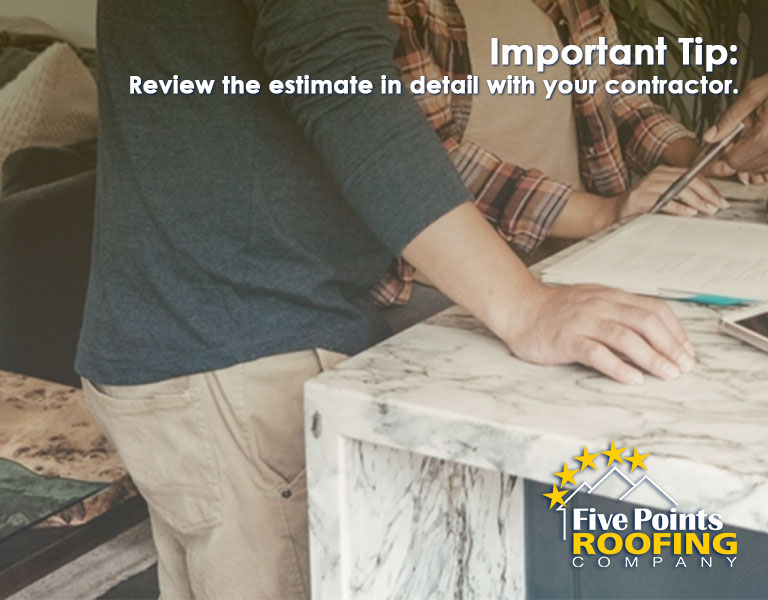
Tip: Verify Insurance Estimating Software Certification
(Xactimate Certified or Symbility Certified)
Ask your contractor of choice if they are certified in the insurance estimating software Xactimate or Symbility Mobile Claims. Knowing how to read and write these estimates, as well as properly using the software, is key in ensuring you get a like-kind repair or replacement of your roof.
Five Points Roofing’s estimators have gone through rigorous insurance training to become Xactimate Level I and Level II certified.
(Less than 2,000 insurance estimators and adjusters worldwide have this level of certification.)
Review The Repair Estimate
Most carriers these days use one of two software programs to write insurance roof repair estimates. Whether it is a Xactimate roof estimate or a Symbility/Core Logic estimate, sit down with your contractor and review this estimate in detail. The estimate will detail items, labor, and materials needed to restore your roof to its pre-loss condition. You should also receive the ACV (Actual Cash Value) portion of your claim total by check with this estimate. Read more about ACV and RCV on our Understanding Your Insurance Estimate Terms page.
Missing or Incorrect Items
Many times, there are missing or incorrect items from the carrier’s original estimate that need to be added. Your contractor should be able to quickly identify what is missing and get those items sent to your carrier for additional payment.
(Usually local code-related items, incorrect shingle types or missed damage during the inspection)
Supplements
Supplements are items that were either left off the original estimate or additional damages found during installation that could not be identified without tearing off the existing roof. If these items are found after review, your contractor should write a supplement using the carrier’s preferred software, and submit it to your insurance carrier for additional payment.
Step 5: Material Selections & Contract Signing
Select Your Materials
Once your insurance carrier and contractor have agreed upon the scope of work, it’s time for the fun part. It is selecting your new roof materials and colors.
Upgrades
Work directly with your contractor on the materials and colors best suited for your home. Many homeowners use this time to upgrade their previous roof to a better quality material, such as a multi-layer premium asphalt shingle, a standing seam metal roof, or even something in the luxury designer range, such as slate or cedar shake. Some want to upgrade their gutters or venting systems to increase energy efficiency. No matter what you choose, just remember you can install any new materials you want, and your contractor will be able to give you a quote for the upgrade, which will be an additional out-of-pocket expense on top of your insurance deductible.
Little Known Fact… Premium insurance carriers’ policies, such as those with Pure and Chubb, offer fixed upgrade incentives. This means that by selecting an energy-efficient product or a material that will help protect the property from future damage could be additionally paid for at no upgrade cost to the homeowner! Some policies have up to $50,000 efficiency upgrade promotions!
Contract Signing
Once all the materials and colors are selected, everything should be put into a contract. If your contractor just asks you to sign the estimate without any firm commitments and deliverables or offers other things that sound too good to be true, be cautious. A contract is in place to protect both you and the contractor from loss, and identifies all terms including the new roof’s warranty.
(Five Points Roofing Has An Unparalleled Limited Lifetime Labor and Material Warranty)
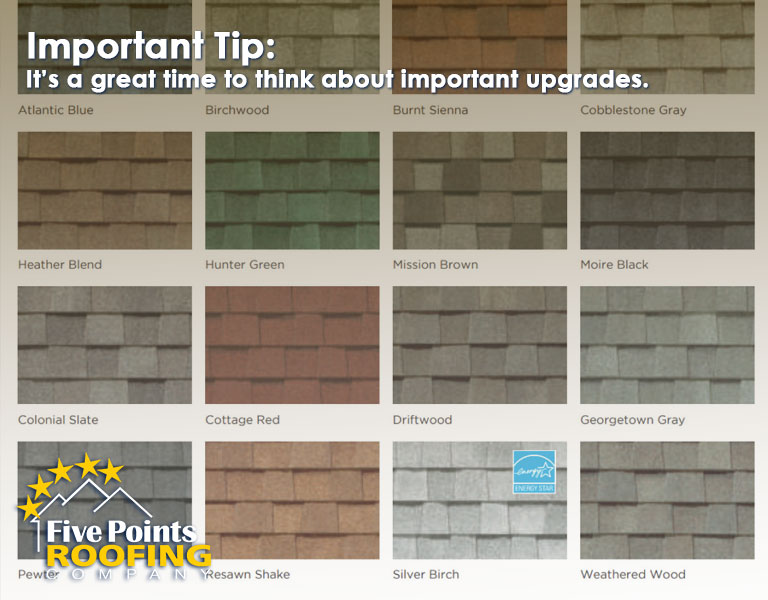
Tip: Be Wary Of Contractors “Crediting” or “Eating” Your Deductible
It’s insurance fraud. Plain and simple. No other description is needed. Reputable general contractors aren’t going to risk losing their licenses to save a homeowner $500-$1000. And it’s not just the contractor at risk, the homeowner faces legal penalties as well for negotiating to not pay their deductible. Think about it, if they’re doing something shady and get caught, they’ll probably throw you under the bus to try and save their butts.
Bonus: Five Points Roofing Doesn’t Collect Final Payment Until After the Install
Unless you have a *special order product or an insurance claim with a deductible, we don’t collect a dime until the day of roof installation.
* Special order products are subject to a 50% deposit due to their non-returnable nature.
Step 6: Roof Replacement Scheduling & Job Completion
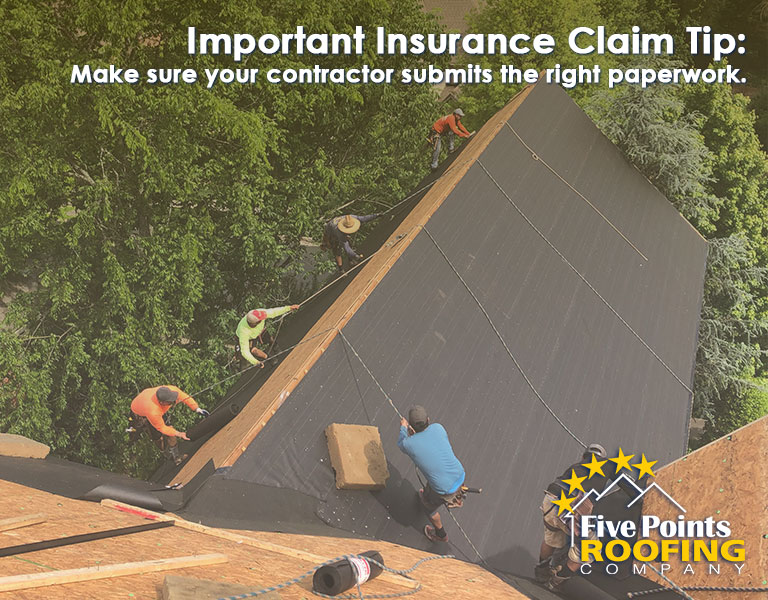
Tip: Your Contractor Should Submit All Paperwork For RCV Payment
Ask your contractor of choice if they will handle all applicable paperwork that needs to be submitted to release all final payments from your insurance carrier. Usually, an insurance carrier requires the following documentation: Certificate of Completion (Completed by the contractor), Final Invoice, and Photos of Completed Work including code upgrades (Drip Edge, Ice & Water, etc.)
Five Points Roofing’s consultants handle all this leg work for our customers. Insurance paperwork can be confusing and stressful, and we don’t want you to have to deal with that.
Roof Replacement
Tentative Scheduling
Once a contract is signed, your contractor should provide a tentative date of installation. Depending on the month of the year, a Five Points Roofing installation typically runs about 3-6 weeks from the date of the contract depending on where you’re located. Keep in mind, this initial date is tentative. The schedule can change pending weather and many variables go into timelines. Your contractor should keep you up to date on any changes to the tentative schedule.
Installation Confirmation
For Five Points Roofing, our process is to notify our customers three days before their scheduled date, they’ll get a confirmation call with their roof material order, color, and planned installation date. Once started, installation can take anywhere from 1 to 5 days depending on the size of the home. Most homes under 40 Squares of roof material (4,000 Sq. Ft.) can be completed in one day.
Job Completion & Notification To Carrier
After the job is fully complete, your contractor should notify the insurance carrier and provide a “Certificate of Completion” and a final invoice. Once they receive this paperwork, any recoverable depreciation or code upgrades held from the original payment will be released to the homeowner typically within 7-10 business days.
Final Payment Collection
The last thing to do is pay the final outstanding balance, which is usually the recoverable depreciation (Difference of RCV minus ACV) plus any additional supplements, insurance paid code upgrades, or homeowner paid upgrades. Five Points Roofing collects this payment after it is received by the homeowner.





